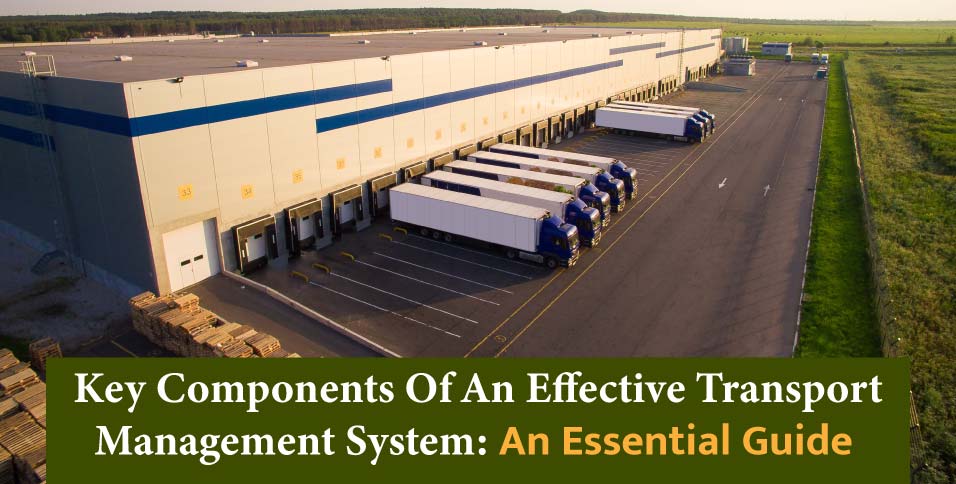A transport management system (TMS) is essential in modern business logistics, serving as the cornerstone of effective supply chain management. It’s a platform that streamlines and optimizes transportation operations, enhancing both cost-efficiency and operational productivity. This guide can help you understand the critical components of an effective TMS, shedding light on how each element contributes to smoother logistics and heightened operational efficiency.
Transportation Planning And Execution
The essence of a TMS lies in sophisticated transportation planning and execution. Effective planning goes beyond basic route mapping. It entails a strategic approach that includes analyzing traffic trends, optimizing delivery schedules, and ensuring cost efficiency, all of which a shipper TMS can assist with. Precise planning can significantly enhance fuel efficiency, reduce delivery times, and improve overall supply chain performance.
Load Planning
Load planning is crucial in maximizing transportation efficiency. Imagine each cargo shipment as a puzzle piece. The goal? To fit these pieces perfectly within transport vehicles. It’s about strategic placement and distribution. Why does this matter? Because how you load that truck or container impacts everything from fuel consumption to delivery speed.
Efficient load planning optimizes space usage, ensuring every inch of the vehicle is used wisely. But that’s not all. It’s also about maintaining vehicle safety. An unevenly loaded vehicle is a hazard on the road. By mastering this art, businesses can see a ripple effect—fewer trips needed, slashed operational costs, and a reduced environmental footprint. It’s a win-win-win.
Carrier Selection
Selecting a carrier is about finding that sweet spot where cost and quality intersect. It’s not always about going for the cheapest option. It’s about asking, ‘Will this carrier deliver my goods on time, safely, and without breaking the bank?’ A TMS helps make this decision by providing data-driven insights. It’s about ensuring goods are delivered in a way that upholds the company’s standards and reputation. Ultimately, the right carrier choice can mean the difference between a satisfied customer and a logistical nightmare.
Visibility And Tracking

Real-time visibility and tracking are paramount for operational efficiency and customer satisfaction. Advanced TMS solutions offer GPS tracking, providing real-time updates on shipment locations. This transparency is vital for managing logistics operations efficiently and meeting customer expectations for delivery information.
Amazon’s implementation of a TMS is a prime example of logistics excellence. By employing advanced tracking and visibility tools, Amazon provides customers with detailed information about their order status, enhancing the overall customer experience. This level of transparency is a benchmark for the industry, illustrating the significant impact of effective TMS utilization.
In this context, one shipping tracking system within a TMS can significantly enhance visibility. It ensures that all shipments are monitored in real-time, providing continuous updates and ensuring that both businesses and customers are well-informed about the status of their deliveries.
Compliance And Documentation
Compliance with transportation laws and regulations is critical. A TMS simplifies compliance by keeping track of relevant laws and ensuring that all transportation activities adhere to these regulations. This is especially crucial for businesses operating across borders, where regulatory compliance can be complex and varied.
Additionally, TMS solutions automate the management of essential documents, like bills of lading, freight invoices, and customs documentation. This automation reduces the likelihood of human error, streamlines operations, and ensures easy access to vital records for audits and disputes.
Freight Audit And Payment
When it comes to the financial side of transportation, freight audit and payment functionalities in a TMS aren’t just important—they’re the backbone. Imagine these features as your financial guardians. They dive into the nitty-gritty of billing, ensuring every invoice is as accurate as a Swiss watch. Why does this matter? Because in the fast-paced world of logistics, even the smallest billing error can snowball into a financial nightmare.
But it’s not all about playing defense. These functionalities streamline the entire payment process. This means payments are on time, every time.
Integration And Scalability
Here’s the deal: business growth isn’t just about increasing numbers; it’s about expanding capabilities. And that’s where integration and scalability come into play in a TMS. As a business grows, its TMS should be flexible enough to accommodate that growth. Integration with other business systems—like ERP (enterprise resource planning) and CRM (customer relationship management)—isn’t just a fancy feature; it’s the cornerstone of a holistic supply chain management strategy.
Why does scalability matter? Because the business world is always changing. A TMS that scales means it’s ready to handle whatever volume or complexity the tide brings in. It’s about being prepared to adapt seamlessly to a growing business’s evolving needs.
Data Analytics And Reporting
Data analytics and reporting in a TMS turn large volumes of transportation data into actionable insights. These tools help businesses analyze performance metrics, identify trends, and make strategic decisions. By leveraging data analytics, companies can uncover opportunities for cost savings, efficiency improvements, and enhanced service quality.
Custom reporting features in a TMS allow businesses to focus on specific metrics and KPIs, aiding in effective performance monitoring. These reports help identify areas for improvement and make data-driven decisions to optimize transportation strategies.
Customer Service And Experience
A top-notch TMS does wonders for customer service and experience. It’s all about delivering efficiently, transparently, and accurately. This is how a TMS becomes a key player in building customer trust and loyalty.
A TMS takes customer interaction up a notch with easy-to-use portals and tools for tracking and managing orders, ensuring customers are always in the loop. Integrating customer feedback mechanisms shows a commitment to service excellence, allowing the system to evolve and meet ever-changing customer needs.
Environmental Considerations
In transportation management, being eco-friendly is no longer a nice-to-have but a must-have. Why? Because a TMS that’s geared toward sustainability is doing more than just reducing emissions. It resonates with a global audience that’s increasingly eco-conscious.
Think about it—when a TMS embraces route optimization for fuel efficiency or integrates green vehicles, it’s making a statement. It’s saying, ‘Hey, we care about our planet!’ This is good for the earth, and it’s great for business.
Customers today look for companies that align with their values. By adopting sustainable practices, a TMS isn’t just cutting down on carbon footprints but also building a brand that people want to support.
Conclusion
Wrapping this up, don’t forget what’s at the heart of a winning TMS: harmony, efficiency, and a relentless focus on the customer. Navigating the intricate logistics and supply chain management world is no small feat. It requires a keen understanding and strategic utilization of every component of your TMS.
And remember, in this journey toward innovation and efficiency, every step counts, whether big or small. Because at the end of the day, it’s not just about where you’re going but also about how you get there.
Author bio:

Sam Taus
An expert in logistics and supply chain management, Sam Taus is an Australian author with extensive experience in the industry. He holds a master’s degree in logistics, and his publications focus on innovative logistics strategies and the impact of technology on supply chain efficiency. His insights are frequently sought after in industry conferences and seminars.
Also Read: Four Benefits of the Transportation Management System















